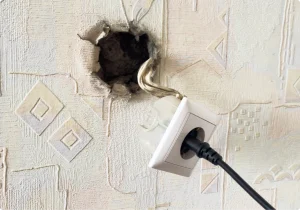Many individuals don’t think about the flagpole they pick until it’s installed, and things don’t go as planned. One of the most common mistakes people make is not accounting for the size differential between the flagpole they purchase and the flag they intend to fly from it.
Before purchasing a flag and flagpole, there are a few things to consider. For example, ensure that the flag can fly from a strong flagpole. You must decide whether the flagpole will be buried or affixed to a house’s side.
By following these guidelines, you can ensure that the American flag is flown freely and proudly in celebration of our country.
Choosing the Appropriate US Flag
American flags come in a broad range of sizes. Flags are classified into two types: permanent flags, which are used to adorn specific homes and businesses, and portable flags, which are generally waved during parades or used to brighten up yards and flowerbeds.
Selecting the appropriate size for an American flag is of the utmost importance. I have outlined certain guidelines for you to follow.
How Do You Select the Correct Size?
It’s critical to first understand the different flag sizes. Three feet by five feet, or three feet high by five feet wide, is the most common size for an American flag displayed at home. However, some individuals choose other sizes.
Many people are unaware that picking the improper flag will affect the lifespan of both the flagpole and the flag. Knowing the different flag sizes and which one is ideal for you can allow your flag to last longer and look great with less wear.
When purchasing a flag, consider the location from where it will be flown. Many people fly their American flag from their front entrance on a wall mount. For this measurement, the flagpole should be double the width of the flag. To support a 3-by-5-foot flag, use a 6-foot flagpole. The flag will cover around half of the flagpole in this ratio.
The ideal flag size for house in-ground flagpoles, which normally stand twenty feet tall, is four by six or three by five feet. Here are the two most common 20-foot residential flagpole sizes.
The Most Popular American Flag Sizes at Home
Given the wide range of sizes available for American flags, it’s a good idea to consider which size you want to fly.
The 3′ by 5′ American flag is popular because it may be placed on both small business and residential buildings. This size flag is also ideal for hanging on an outdoor wall because it is approximately the same size as a 60″ television.
2′ by 3′ American flags are an appropriate size for those who live in smaller spaces. They may be flown from a 5-foot flagpole and are smaller than 3’x5′ flags. These are commonly chosen by residents of apartments, condominiums, prefabricated dwellings, smaller residences, and individual businesses.
Houses can occasionally fly 4′ by 6′ American flags, although they often require a 20 to 25′ in-ground flagpole. They can be seen in large, expensive homes, but you’re more likely to find them in business settings.
Large American flags are typically displayed outside of businesses and in public places such as government buildings and post offices. At home, smaller flags work nicely. This is also because bigger flags necessitate flagpoles that are designed specifically to withstand the power of the flag’s waving in high-wind conditions.
Why Is Choosing the Right Flag and Flagpole Size Important?
Investing in the right flagpoles is critical if you want to ensure that your flag will fly with pride for many years. Remember that a bigger flag requires a larger flagpole. A huge flag requires a strong flagpole to support it and keep its beauty for many years. Heavy-duty flagpoles require little maintenance and may extend the life of your flag while also improving its appearance.
The reasoning behind the necessity for a suitable flagpole is as follows:
- The majority of homeowners would like to have a flagpole and flag placed rather than changing it soon since it would extend the life of their flag. Certain flagpoles feature telescoping designs, making it easy to raise and lower the flag as needed. Anodized aluminum is a popular material for sturdy flagpoles because it allows them to bend in high winds. The last thing you want is a flagpole that collapses in harsh weather and damages your home or other property.
- Little to no maintenance: Most landowners do not want to spend much time maintaining their American flags after they have been placed. Many people choose corrosion-resistant aluminum telescoping flagpoles over steel because of their better strength and resistance under adverse weather conditions.
- Enhanced Curb Appeal: Many people are surprised to learn that placing a beautiful flag in front of a house may considerably increase its curb appeal. Many individuals proudly display their flags throughout the day and decorate them with lights at midnight. This will guarantee that the flag remains visible long after nightfall.
- Hold Up in Inclement Weather: Before purchasing a flagpole, consider its weather resilience. If they choose to use wood or another material, the flagpole may need to be replaced every few years. Aluminum has a longer lifespan than other materials due to its resistance to corrosive substances and ability to tolerate extreme weather.
- Flaunt Your Patriotism: The majority of individuals who fly a flag at home do so to show their love and passion for their country. Many public workers, military members, and veterans’ families insist on having flags flown from their houses to honor their accomplishments and sacrifices. What a touching reminder of everything that others have sacrificed to keep us free.
Regardless of why you choose to fly the American flag, we are allowed to honor our country as free citizens. Choosing the right items makes the process go more smoothly. Click here to visit Flagpole Farm and learn more about long-lasting flagpoles and their significance.



